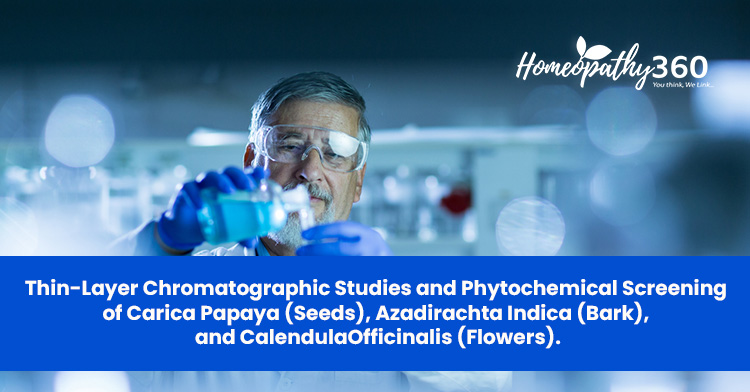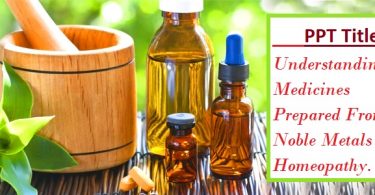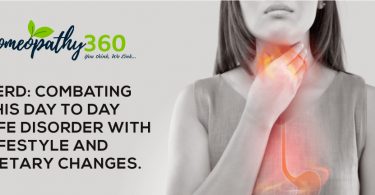
ABSTRACT
Herbal drugs are acknowledged as significant helpful specialists for the treatment of numerous infections. The improvement of true scientific techniques that can dependably profile the phytochemical organization, including quantitative investigations of marker/bioactive mixtures and other significant constituents, is a significant test for researchers. The present study deals with the phytochemical screening and thin layer chromatographic studies of Carica papaya, Azadirachta indica and Calendula officinalis aqueous extract belonging to family Caricaceae, Meliaceae and Asteraceae respectively.
KEYWORDS
Carica papaya, Azadirachta indica, Calendula officinalis, Phytochemical, Retention factor, TLC Studies. Phytochemical, Chromatography.
INTRODUCTION
The construction of a chemistry-based taxonomy of plants is a meaningful help in plant systematics. The contribution of TLC is significant in this sense such that the thin-layer chromatographic screening of plant extracts facilitates the identification of chemotaxonomic markers and the entire chemotaxonomic profiles, and hence, it facilitates the determination of botanical taxa 1,2,3,4. The TLC-based screening methods often target medicinal plants in the search for various physiological properties of botanical material (e.g., free radical scavenging, antimicrobial, and enzyme-inhibiting activity 5,6,7. Herbs being easily available to human beings have been explored to the maximum for their medicinal properties.
- Carica papaya , belongs to the family CARICACEAE. Papaya contains vitamins A, B, and C, and proteolytic enzymes (papain and chymopapain) which have Antiviral, Antifungal, and Antibacterial properties. The plant is reported to possess analgesic, anti-inflammatory, antipyretic, antiulcer, and antiseptic and abortifacient activities. Its use as an insecticidal agent has been investigated by several workers and various phytochemical, pharmacological, antibacterial, and anti-ovulatory studies have already been carried out with the seed extracts.8
- Azadirachta indica , commonly known as Neem, belongs to the Family MELIACEAE and is one of the most versatile medicinal plants that has gained worldwide importance due to medicinal and insecticide properties. Chemically diverse and structurally complex phytochemical constituents such as azadirachtin, nimbolinin, nimbidin, gedunin, nimbidol, Quercedin, gallic acid, glycoside, amino-acid, ascorbic acid, salannin, and many others are found in Azadirachta indica which show anti-diabetic, anti-viral, anti-oxidant, anti-microbial, anti-parasitic, anti-malarial, anti-cancer, anti-ulcer, hepatoprotective and gastro-protective activities.9
- Calendula officinalis , Herbal plants provide a rich source of health care to prevent and treat different pathological states. Calendula officinalis is an aromatic, erect, annual herb belonging to the family ASTERACEAE, it contains a wide range of chemical constituents including saponins, triterpenes, triterpenoids esters, flavonoids, steroids, tannin, quinines, coumarins, carotenoids, amino acids, polysaccharides, essential and volatile oils, and many other chemical groups. Calendula officinalis exerted many therapeutic effects including antibacterial, antifungal, anthelmintic, antiviral, cytotoxic, antioxidant, anti-inflammatory, analgesic, hepatoprotective, cardioprotective, gastroprotective, wound healing, and many other effects. The present review will highlight the chemical constituents and the pharmacological and therapeutic effects of Calendula officinalis.
AIM
To assess the bioactive components present in the aqueous extract of Carica papaya (seeds), Azadirachta indica (Bark), and Calendula officinalis (flower) using phytochemical screening and chromatographic analysis.
OBJECTIVES
- To Analysis the aqueous extract of Carica papaya (seeds), Azadirachta indica(bark) , Calendula officinalis (flowers),through the Thin layer chromatography process .
- To Analysis the aqueous extract of Carica papaya (seeds), Azadirachta indica(bark) , Calendula officinalis (flowers),through the phytochemical screening.
MATERIALS AND METHODS
COLLECTION OF PLANT
- The plants Carica papaya (seeds), Azadirachta indica (bark) , Calendula officinalis (flowers) collected from the Institute of Teaching and Research in Ayurveda, Jamnagar (GUJRAT) in the month of Oct – Nov. 2023.
PREPARATION OF PLANT EXTRACT
- Drying of fresh plant parts was carried out in the sun but under the shade. Dried Carica papaya (seeds), Azadirachta indica (Bark), and Calendula Officinalis (flower) were preserved in plastic bags closed tightly, and powdered as per the requirements.
EXTRACTION
- The following procedure was adopted11 for the preparation of aqueous extracts from the shade-dried and powdered herbs:
DEFATTING OF PLANT MATERIAL
- Powdered material of Carica papaya (seeds), Azadirachta indica (Bark), and calendula officinalis (flower) were shade-dried at room temperature. The shade-dried plant material was coarsely powdered and subjected to extraction with petroleum ether (65-85 °C) in a soxhlet apparatus. The extraction was continued till the defatting of the material had taken place.
EXTRACTION BY HOT CONTINUOUS SOXHLETION PROCESS
- Dried powdered (seeds)Carica papaya, Azadirachta indica (Bark), and (flower) Calendula officinalis , have been extracted with aqueous (Water) using Soxhlet’s apparatus for 48 hrs, filtered, and dried using a vacuum evaporator at 45 °C.
DETERMINATION OF PERCENTAGE
The percentage yield of each extract was calculated by using the following formula:
- Phytochemical Screening
Chemical tests for the screening and identification of bioactive chemical constituents like alkaloids, carbohydrates, glycosides, saponins, phenolic compounds, phytosterols, proteins, amino acids, flavonoids, and tannins, in the medicinal plants under study were carried out in extracts by using standard procedure in. 12,13
- Thin layer chromatographic studies
Each solvent extract was subjected to thin layer chromatography (TLC) as per conventional one-dimensional ascending method using silica gel 60F254, 7X6 cm (Merck) was cut with ordinary household scissors. Plate markings were made with a soft pencil. Glass capillaries were used to spot the sample for TLC and the applied sample volume of 1 microliter by using capillaries at a distance of 1 cm at 5 tracks. In the twin trough chamber with different solvent systems Hexane: Acetic acid (9:1) solvent system I, in solvent system II Hexane: Ethyl acetate: Acetic acid (5:4:1), In solvent system III Hexane: Ethyl acetate: Acetic acid (4:4:2), In solvent system IV Hexane: Ethyl acetate: Acetic acid (3:6:1), In solvent system V Hexane: Ethyl acetate: Acetic acid (2:7:1) used. After pre-saturation with the mobile phase, 20 min for development were used. After the run plates were dried and sprayed freshly prepared iodine reagents were used to detect the bands on the TLC plates. The movement of the active compound was expressed by its retention factor (Rf), and values were calculated for different samples. 14
- Phytochemical Screening
Chemical tests for the screening and identification of bioactive chemical constituents like alkaloids, carbohydrates, glycosides, saponins, phenolic compounds, phytosterols, proteins, amino acids, flavonoids, and tannins, in the medicinal plants under study were carried out in extracts by using standard procedure in. 12,13
- Thin layer chromatographic studies
Each solvent extract was subjected to thin layer chromatography (TLC) as per conventional one-dimensional ascending method using silica gel 60F254, 7X6 cm (Merck) was cut with ordinary household scissors. Plate markings were made with a soft pencil. Glass capillaries were used to spot the sample for TLC and applied sample volume 1 micro litre by using capillary at a distance of 1 cm at 5 tracks. In the twin trough chamber with different solvent systems Hexane: Acetic acid (9:1) solvent system I, In solvent system II Hexane: Ethyl acetate : Acetic acid (5:4:1), In solvent system III Hexane: Ethyl acetate: Acetic acid (4:4:2), In solvent system IV Hexane: Ethyl acetate: Acetic acid (3:6:1), In solvent system V Hexane: Ethyl acetate: Acetic acid (2:7:1) used. After pre-saturation with the mobile phase, 20 min for development were used. After the run plates were dried and sprayed freshly prepared iodine reagents were used to detect the bands on the TLC plates. The movement of the active compound was expressed by its retention factor (Rf), and values were calculated for different samples. 14
RESULTS AND DISCUSSION
The crude extracts so obtained after the soxhlet extraction process, and each extract was further concentrated on water bath evaporation of the solvents completely to obtain the actual yield of extraction. Obtaining the percentage yield of extraction is a very important phenomenon in phytochemical extraction to evaluate the standard extraction efficiency for a particular plant, different parts of the same plant, or different solvents used. The yield of extracts obtained from different samples using methanol as a solvent is depicted in Table 1.
TABLE NO. 1- EXTRACT AND %YIELS (w/w)
| S.NO. | EXTRACT | % Yield (w/w) |
| 01 | CARICA PAPAYA | 3.56% |
| 02 | AZADIRECHTA INDICA | 4.25% |
| 03 | CALENDULA OFFICINALIS | 9.85% |
The yield of aqueous extracts is shown in Table 1. The amount obtained from Carica papaya (seeds), Azadirachta indica (Bark) and Calendula officinalis (flower) methanolic extracts are 3.56%, 4.25% and 9.85% (w/w) respectively.
A small portion of the dried extracts were subjected to the phytochemical analysis to test for alkaloids, glycosides, tannins, saponins, flavonoids and steroids separately for extracts of all samples. Small amount of each extract is suitably resuspended into the sterile distilled water to make the concentration of 1 mg per ml. The outcomes of the results are discussed separately in the table.
Table 2: RESULT OF PHYTOCHEMICAL SCREENING
| CHEMICAL TESTS ALKALOIDS | CARICA PAPAYA | AZADIRECHTA INDICA | CALENDULA OFFICINALIS |
| MAYERS REAGENT | – | – | + |
| HAGERS REAGENT | – | – | + |
| WAGNERS REAGENT | – | – | – |
| DRAGENDORFFS REAGENT | – | – | + |
GLYCOSIDES
| BALJET TEST | + | + | – |
| LEGALS TEST | + | + | – |
PHENOLS/TANNINS
| Ferric chloride | + | + | + |
| Gelatin Solution | + | + | + |
| Lead acetate test | – | – | + |
FLAVONOIDS
| FeCl3 test | – | + | – |
| Alkaline reagent test | + | – | + |
| Shinoda test | + | + | + |
SAPONINS
| Foam test | + | + | + |
| Hemolytic test | + | + | – |
| Lead acetate | – | – | + |
FIXED OIL / FATS
| Spot | – | – | – |
| Saponification | – | – | – |
GUMS & MUCILAGE
| Water | – | – | – |
CARBOHYDRATES
| Molish test | – | – | – |
| Fehling’s solution test | – | – | – |
| Benedict’s test | – | – | – |
AMINO ACIDS
| Ninhydrin Test | – | – | – |
| Millons Test | – | – | – |
| Xantoprotein Test | – | – | – |
+ indicates present; – indicates absent .
The present study carried out in the Carica papaya (seeds), Azadirachta indica (Bark) and Calendula officinalis (flower) aqueous extract revealed the presence of various medicinal active constituents. The phytochemical active compounds aqueous extract of Carica papaya (seeds), Azadirachta indica (Bark) and Calendula officinalis (flower) were qualitatively analysed and the results are presented in Table 2.
Distance traveled by solute
Rf =
Distance traveled by solvent
Table 3: CALCULATION OF Rf. VALUE
| S.NO. | COMPOUND | EXTRACT | Rf VALUE |
| 1. | Gallic acid | Toluene: Ethyl acetate: Formic acid | |
| (7:5:1) | 0.65 | ||
| 2. | Quercetin | Toluene: Ethyl acetate: Formic acid | |
| (5:4:1) | 0.82 | ||
| 3. | Carica papaya | Toluene: Ethyl acetate: Formic acid | |
| (5:4:1) | 0.54, 0.82 | ||
| 4. | Azadirechta indica | Toluene: Ethyl acetate: Formic acid | |
| (5:4:1) | 0.38, 0.82 | ||
| 5. | Calendula officinsalis | Toluene: Ethyl acetate: Formic acid | |
| (7:5:1) | 0.65, 0.44,0.76 |
- A large number of solvent systems were tried to achieve a good resolution. Finally, the solvents Toluene: Ethyl acetate: Formic acid (7:5:1) and Toluene: Ethyl acetate: Formic acid (5:4:1) was used. Results of thin layer chromatographic studies of the aqueous extract of Carica papaya (seeds), Azadirachta indica (leaves) and Calendula officinalis (flower) are tabulated in table 3.
- A large number of plants produce secondary metabolites such as alkaloids, flavanoids, phenols, terpenoids, steroids and quinines that are used in pharmaceuticals, cosmetics and pesticide industries. Thus the present study confirms the traditional medical practice and previous pharmacological observations and supplement treatment for other health problems such as allergic reactions, arthritis, some malignancies, and diseases resulting from hormone deficiencies or abnormal production etc: in. In the present study, phytochemical screening for all three extracts showed significant indication about the presence of metabolites.15 Alkaloids, saponinis, tannins, amino acids, flavonoids and terpenoids were found to be present in the aqueous extract of Carica papaya (seeds), Azadirachta indica (Bark) and Calendula officinalis (flower).16 The results of the present study also supplement the folkloric usage of the studied plants which possess several known and unknown bioactive compounds with bio-activity. By isolating and identifying these bioactive compounds new drugs can be formulated to treat various diseases and disorders.
- TLC profiling of all three extracts gives an impressive result that directing towards the presence of number of phytochemicals. Various phytochemicals gives different Rf values in different solvent system. This variation in Rf values of the phytochemicals provides a very important clue in understanding of their polarity and also helps in selection of appropriate solvent system for separation of pure compounds by column chromatography. Mixture of solvents with variable polarity in different ratio can be used for separation of pure compound from plant extract. The selection of appropriate solvent system for a particular plant extracts can only be achieved by analyzing the Rf values of compounds in different solvent system. Different Rf values of the compound also reflect an idea about their polarity. This information will help in selection of appropriate solvent system for further separation of compound from these plant extracts.
CONCLUSION
Due to the presence of several components that are essential for good health,the plant that was screened for phytochemical elements appeared to have the potential to bith improve consumer health and serve as a source of valuable medications. The phytochemical screening and chromatographic analysis of aqueous extract of (Seeds – Carica papaya), (Bark – Azadirachta indica) and (Flower – Calendula officinalis ) have shown the presence of pharmacologically active substances such as alkaloids, steroids and flavoniods.
Normal Light Short U.V Long U.V
Spot-1 Standard, Spot-2 Extract, Figure 1: Photograph of T.L.C (Azadirachta indica)
Normal Light Short U.V Long U.V
(Spot-1 Standard, Spot-2 Extract), Figure 2: Photograph of T.L.C (Carica papaya)
Normal Light Short U.V Long U.V
(Spot-1 Standard, Spot-2 Extract),Figure 3: Photograph of T.L.C (Calendula officinalis)
REFERENCES
- Kaltsikes, P.J.; Dedio, W. A thin-layer chromatographic study of the phenolics of the genus Aegilops. I. Numerical chemotaxonomy of the diploid species. Can. J. Bot. 1970, 48, 1775–1780. [Google Scholar] [CrossRef]
- Kaltsikes, P.J.; Dedio, W. A thin-layer chromatographic study of the phenolics of the genus Aegilops. II. Numerical chemotaxonomy of the polyploid species. Can. J. Bot. 1970, 48, 1781–1786. [Google Scholar] [CrossRef]
- Rogers, C.B.; Abbot, A.T.D.; van Wyk, A.E. A convenient thin layer chromatographic technique for chemotaxonomic application in Maytenus (Celastraceae). S. Afr. J. Bot. 1999, 66, 174–176. [Google Scholar] [CrossRef][Green Version]
- Mandal, P.; Choudhury, D.; Ghosal, M.; Das, A.P. TLC based chemotaxonomic approach of some laurels present in sub-Himalayan Terai and Duars region of West Bengal, India. Int. J. Pharm. Sci. Rev. Res. 2016, 41, 193–196. [Google Scholar]
- Cieśla, Ł.; Waksmundzka-Hajnos, M. Application of thin-layer chromatography for the quality control and screening the free radical scavenging activity of selected pharmacuetical preparations containing Salvia officinalis L. extract. Acta Pol. Pharm.—Drug Res. 2010, 67, 481–485. [Google Scholar]
- Kagan, I.A.; Flythe, M.D. Thin-layer chromatographic (TLC) separations and bioassays of plant extracts to identify antimicrobial compounds. J. Vis. Exp. 2014, 85, e51411. [Google Scholar] [CrossRef][Green Version]
- Wang, M.; Zhang, Y.; Wang, R.; Wang, Z.; Yang, B.; Kuang, H. An evolving technology that integrates classical methods with continuous technological developments: Thin-layer chromatography bioautography. Molecules 2021, 26, 4647. [Google Scholar] [CrossRef]
- https://www.researchgate.net/publication/319048781_NUTRITIONAL_AND_MEDICINAL_VALUE_OF_PAPAYA_CARICA_PAPAYA_LINN
- https://www.researchgate.net/publication/273911233_Azadirachta_indica_A_Plant_With_Versatile_Potential
- https://www.researchgate.net/publication/313678751_THE_CHEMICAL_CONSTITUENTS_AND_PHARMACOLOGICAL_EFFECTS_OF_CALENDULA_OFFICINALIS_-A_REVIEW
- Kokate CK. Practical Pharmacognosy. Vallabh Prakashan, New Delhi, India, 54, 1994.
- Wagner H, Baldt S, Zgainski EM. Plant drug analaysis. Berlin: Springer; 1996
- Harbone JB. Phytochemical Methods-A Guide to Modern Techniques of Plant Analysis. Chapman and Hall, London, 1998; 182-190.
- https://www.coursehero.com/file/220115978/Chemistry-Thin-layer-Chromatography-of-Spinach-Extractpdf/
- Bhawani SA, Sulaiman O, Hashim R and Mohamad IMN. Thin-layer chromatographic analysis of steroids: A review. Trop J Pharmaceutical Res. 2010; 9(3): 301–313.
- https://www.nature.com/articles/s41598-021-89437-4
DR. Anand Pal Singh Kushwah1,
DR. Manisha P. Gajendragadkar2
1 Ph. D. Scholar, Department of Homeopathic Pharmacy, Bharati Vidyapeeth (Deemed to be University) Homoeopathic Medical College, Pune
2 Professor, Head of Department, M. D. (Homeo.), Homoeopathic Pharmacy, Bharati Vidyapeeth (Deemed to be University) Homoeopathic Medical College





